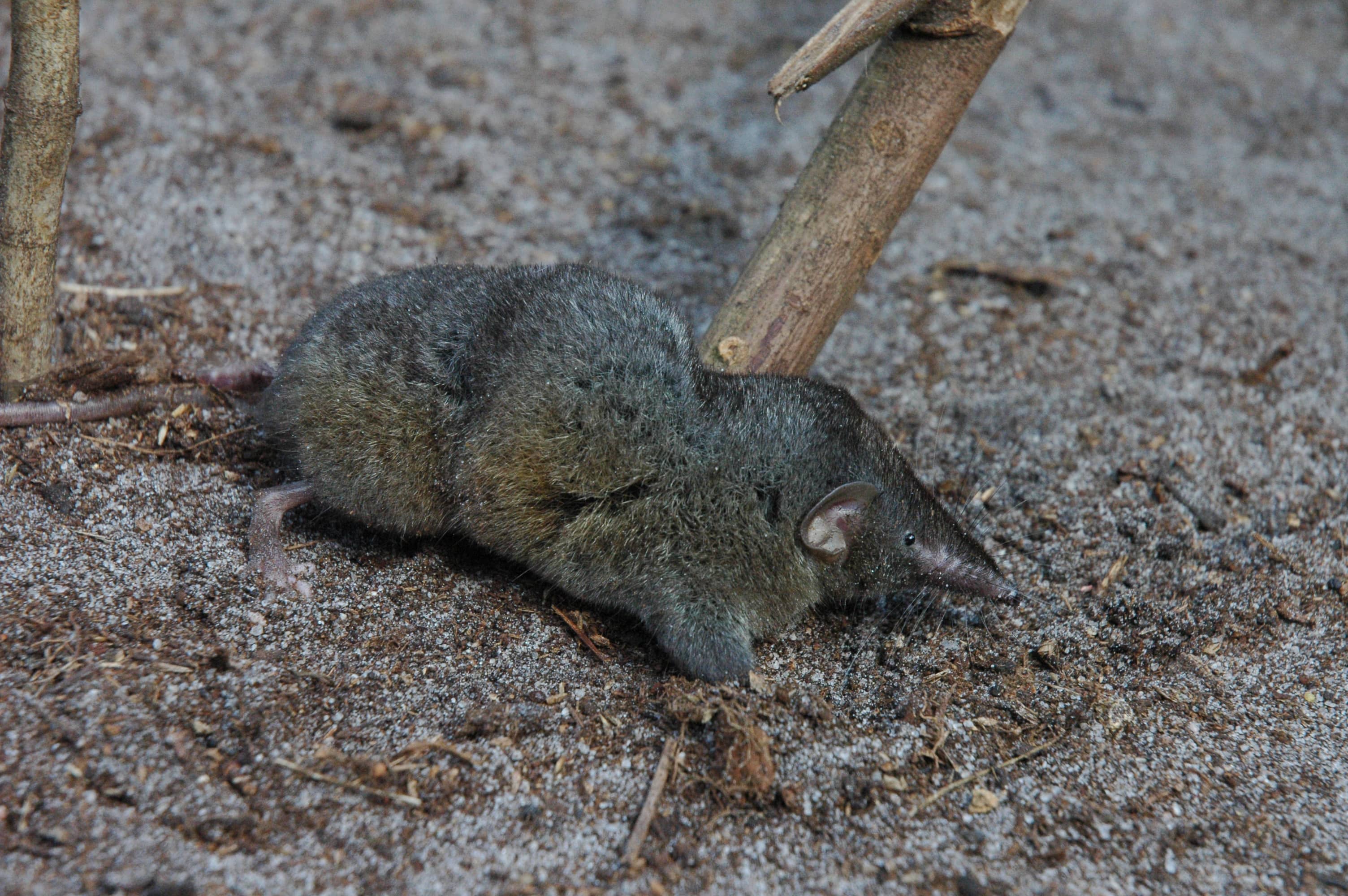Scientists Discover New “Hero” Shrew Species, Lifts Trees and Logs for Food
OutdoorHub Reporters 07.25.13

A new study published in Biology Letters details the discovery of a new species of the “hero” shrew, an animal with an immensely strong backbone and revered as a source of protection in cultures where the animal is found.
Roughly a hundred years ago British zoologist Oldfield Thomas came upon one of the world’s strangest animals in the depths of the Ugandan countryside. Locals called it simply the hero shrew. Despite noting the animal’s size–the creature can grow up to two ounces in mass–Thomas missed the most important aspect of the shrew. It was not until Joel Asaph Allen discovered a preserved sample of the animal that its secret was revealed. The shrew’s spinal column is different than almost any other mammal and contains 11 lumbar vertebrae with interlocking spines. The spines connect the vertebrae together in an extremely tough–and large–backbone.
“The lumbar region is very, very expanded,” the study’s lead author, William Stanley, told OutdoorHub.
An expedition to find the animal in the early 1900s found that the locals ascribed extraordinary powers to the shrew, and equipped themselves with body parts from the animal before battle.
“The residents of the area considered the shrew to be a talisman of protection,” Stanley explained. “If they wore any fur, bones or even their ashes, they would be invincible in battle. The researchers looked on in awe as one of the locals pulled out a living hero shrew and stood on it for five minutes. He got off and it walked away. Keep in mind, this is an animal the size of a small rat and should by all rights be crushed.”
In the Democratic Republic of the Congo, Stanley and his team discovered a second species of hero shrew distinctly different from the one found by Thomas in Uganda.
“The hero shrew has been known as one species for over a hundred years. What we’ve done is discover a second species,” said Stanley. “The backbone is still expanded but does not have the same amount of lumbar vertebrae. It has characteristics that is intermediate between normal shrews and hero shrews.”
Stanley believes this is significant because it could mark an evolutionary middle point between the “armored” hero shrews and their more modern cousins. This new species, given the name Scutisorex thori or Thor’s hero shrew, is expected to be four to five times stronger than any mammal its size. Researchers believe the shrew uses this strength and its expanded backbone to leverage the underside of trees and logs in order to find food. In doing so, the shrew essentially lifts the large objects to get at beetles and worms lying beneath. It can also withstand tremendous amounts of pressure, just like the other species of hero shrew.
Currently researchers have no specimens of the hero shrew in captivity, although the species is not considered especially rare or endangered. Stanley hopes that eventually a live hero shrew can eventually be captured for study.
“It would be relatively easy to prove our hypothesis,” Stanley said, describing a simple method in which the shrew would be placed in an aquarium filled with rocks and other large objects under which food lies. If the researchers’ guess is correct, the shrew would be able to easily leverage the object to get at the the grub underneath.
Stanley believes that more discoveries will be made soon, strong evidence that the “Age of Discovery isn’t over.”

